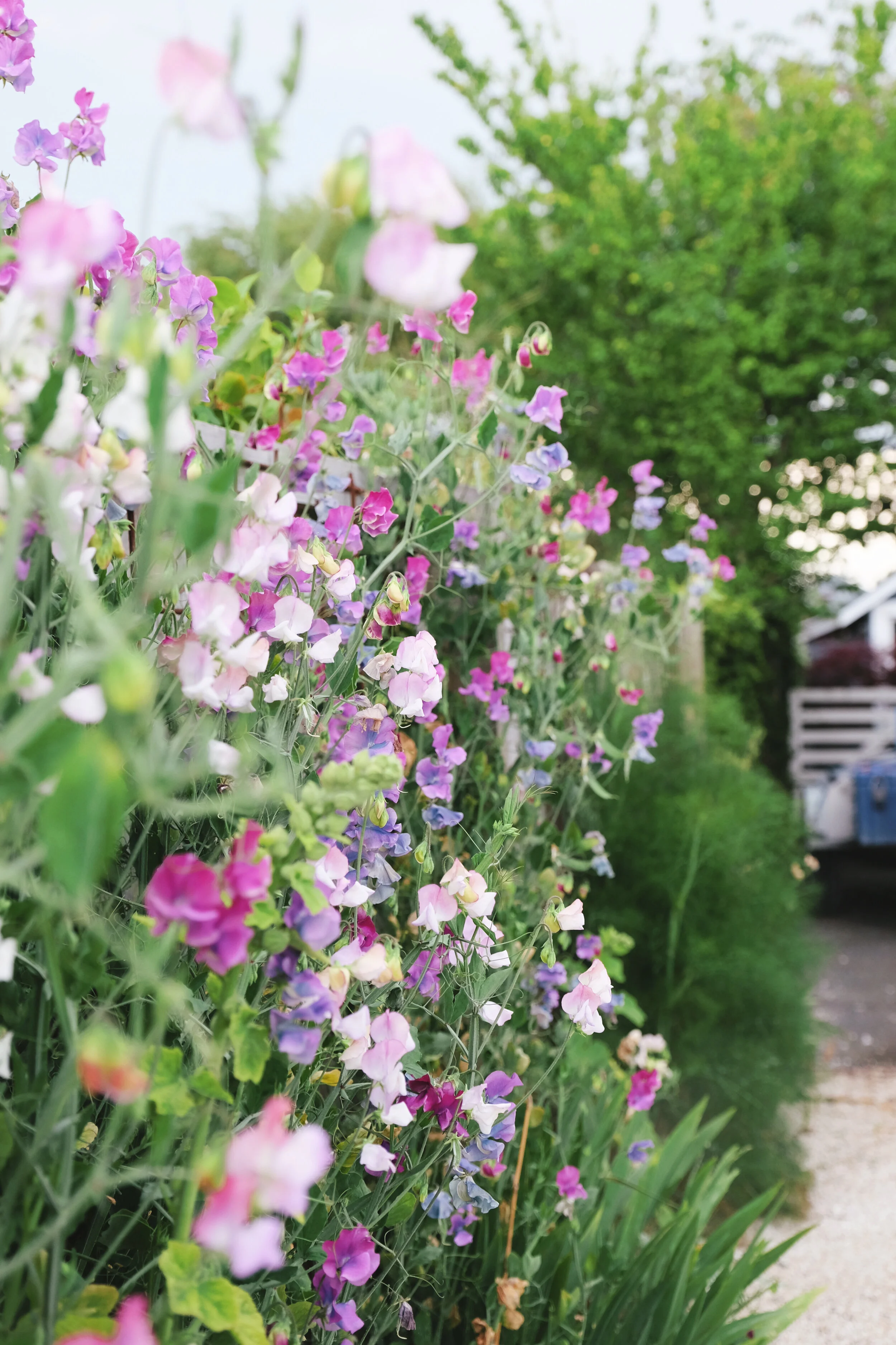Deadheading to keep plants flowering
/Four years into my gardening adventure, I’m still constantly surprised by what nature gets up to in my humble backyard plot. But no surprise has been better than the discovery of plants that fall into the category of “cut and come again”. They are the extra value, bonus-giving reward for anyone wanting a flower-filled garden, and the good news is we’re re-entering the season where we can help them along.
Iceberg's are floribunda roses that respond well to deadheading
In short, “cut and come again” refers to plants that will continue to flower if you prevent them forming seed heads. They will flower at least until the first frosts or disease gets them. By consistently harvesting flowers for the vase or “deadheading” dying ones, you are denying them any chance to create seed and this triggers them to have another go at forming new flowers. An excellent and rewarding result for you, the gardener.
“Deadheading means snipping off faded, dead looking blooms. Cutting flowers for the vase has the same effect: You are just removing fresher ones from the plant. Deadheading is made pleasant with an early evening stroll, armed with narrow-nosed snips and a bucket or trug for your victims.”
Pink and white echinacea are perennial plants that are urged to keep producing flowers when deadheaded.
Pom pom dahlia ; “Rococo” will attempt to flower right through to the first frosts if deadheaded before forming seed heads from spent flowers.
For most of these plants, look to snip the flowering stalk off as close to the main stem as possible, or, if it is the whole central head of the plant, snip off between a pair of leaves or just above a side stem. It's in these intersections that new growth will appear if it hasn’t already.
Some of my favourite annual plants that you would manage in this way are cosmos, snapdragons, zinnias, and annual lupins. While perennials like dahlias and echinacea are the gifts that keep giving into late summer.
Sweet peas are perhaps the best surprise here, responding magnificently to diligent harvesting and deadheading. The great Monty Don noted that if you head out and harvest every single open bloom on your vines once or twice a week, leaving only unopened buds, your gorgeous sweet peas will continue to flower far beyond their natural cycle once seed heads develop. This is a theory I have tested with great success.
Sweet peas respond really well to deadheading and harvesting all flowers from the vines 1 - 2 times per week. Certainly snip off seedpods when you see them until the plants are starting to fade, then allow pods to develop and brown on the plant before saving seed for next year (or sprinkling in place directly in autumn).
Snipping off a spent bloom in amongst a cluster of happy ones on my floribunda “Iceberg” roses.
Deadheading the whole stem of finished blooms form my Iceberg roses. I am snipping off just above a large 5 leaflet leaf stem.
Among the cut and come again family, roses have perhaps posed the biggest challenge for me as a beginner as they have a slightly different set of rules when encouraging their ongoing show.
For floribunda types that have an abundance of blooms on a single stem, you can visit them weekly to simply snip off the wilted, petal-less heads, leaving their healthy neighbours and buds intact. Once a whole “head” of blooms looks done, snip off the flowering stem just above the closest ‘five leaflet’ leaf. This sounds weird, but is obvious once you start counting.
Aim to make a clean cut on a 45 degree angle just above it, this helps with water running off and avoiding disease. You will notice a tiny little red bud already forming in that intersection, this will become your new flowering stem. Like magic!
If your bush starts looking a little wonky in shape, it is fine to take your deadheading down to the second ‘five-leaflet’ leaf. I have found my roses respond just as well to that. My iceberg roses will flower right into winter if I keep on top of deadheading.
For hybrid tea roses that usually have one bloom per stem, you want to only come down to snip off just above the first five-leaflet leaf to encourage another go. It is incredibly satisfying to see the fresh new growth firing away for round two.
Deadheading hybrid tea rose
New growth after deadheading on hybrid tea rose
So if you are looking around your new patch of flowers, wondering how each of your plants will respond, I would suggest a quick google to see if they are ‘cut and come again’. Knowing what you can harvest harder for your inside posies is very helpful and keeping flowers around for as long as possible in your garden makes all the effort worth it.
This article was first featured in my Stuff ‘Homed’ gardening column for beginners and The Press on December 17, 2020
All words and images are my own, shot in my garden in Christchurch, New Zealand.










